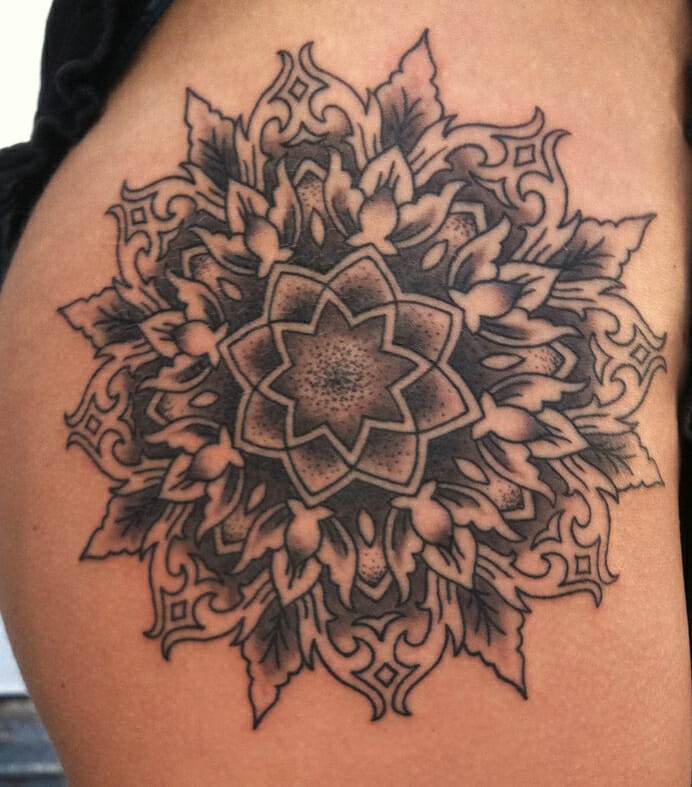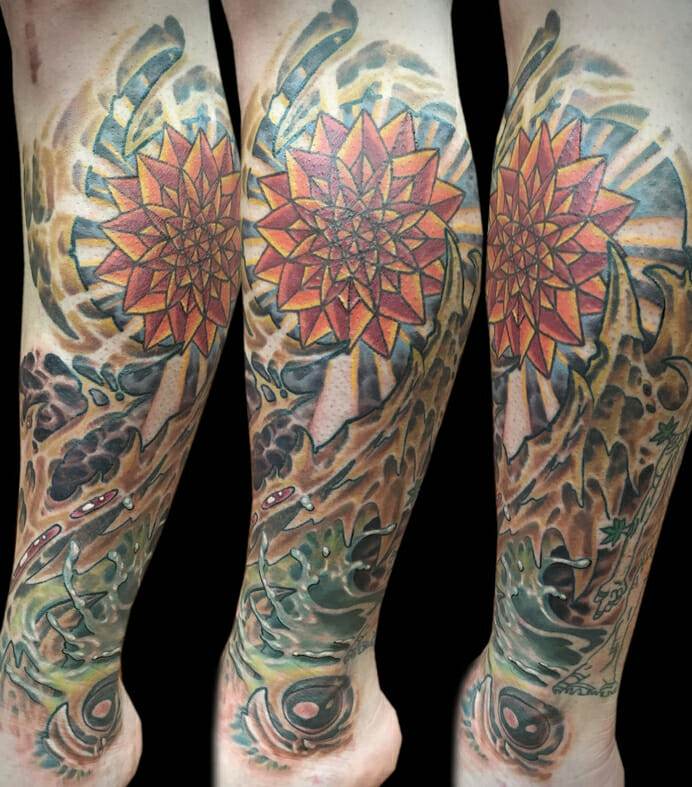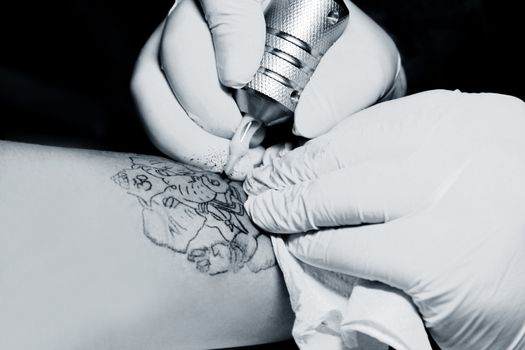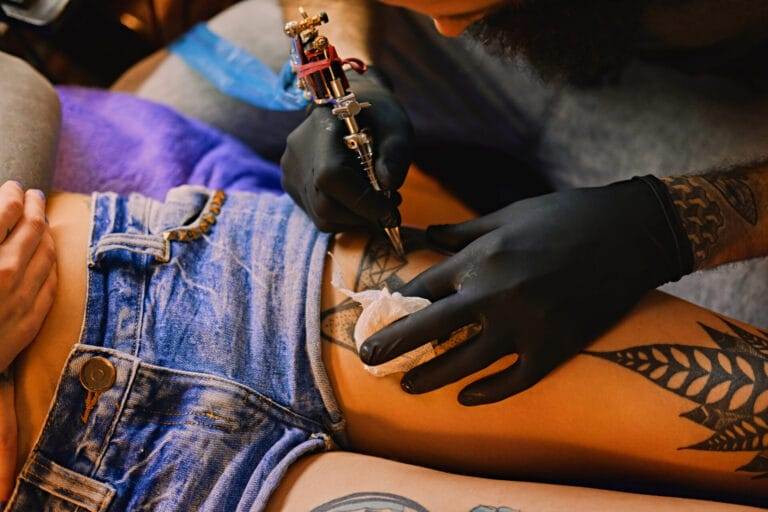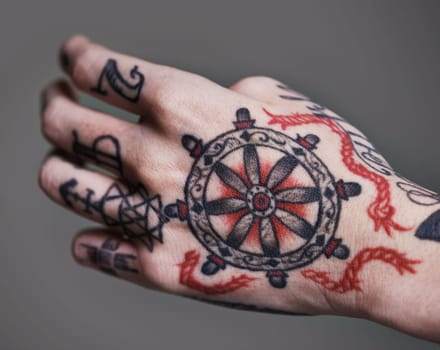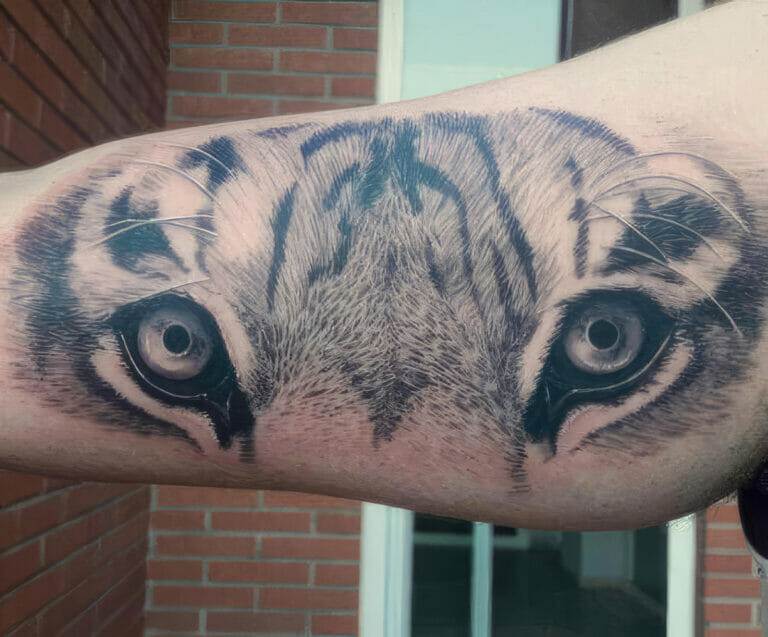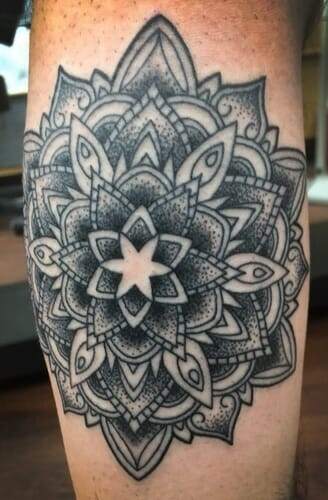
Mandala tattoos have become increasingly popular in recent years, with people from all walks of life embracing this ancient art form. These intricate and mesmerizing designs have a rich history and deep spiritual significance. In this blog post, we will explore the origins of mandalas, their meaning, and how they can be used as a tool for personal growth and transformation. Whether you are considering getting a mandala tattoo or simply want to learn more about this fascinating art form, this post will provide you with valuable insights and inspiration.
The History of Mandala Tattoos: From Ancient Traditions to Modern Trends
Mandalas have been used for centuries in various cultures around the world. The word “mandala” is derived from the Sanskrit word for “circle” and represents the universe or wholeness. In Hinduism and Buddhism, mandalas are used as a tool for meditation and spiritual practice. They are often created using intricate geometric patterns and vibrant colors to represent different aspects of the divine.
In recent years, mandalas have gained popularity as a tattoo design. People are drawn to the beauty and symmetry of these designs, as well as their spiritual significance. Modern tattoo artists have taken inspiration from traditional mandalas and created their own unique interpretations. From large, intricate designs covering an entire back or chest to smaller, minimalist designs on the wrist or ankle, there is a wide range of options available for those interested in getting a mandala tattoo.
The Meaning Behind Mandala Tattoos: Exploring the Spiritual Significance of Sacred Geometry
Mandalas are not just visually appealing; they also hold deep spiritual meaning. The intricate geometric patterns found in mandalas represent the interconnectedness of all things in the universe. They symbolize unity, balance, and harmony. Each element of a mandala has its own significance, from the center point representing the divine or the self, to the outer circles representing the layers of existence.
Sacred geometry is a fundamental aspect of mandalas. It is the study of geometric patterns and shapes that are believed to hold spiritual and metaphysical properties. The use of sacred geometry in mandala tattoos can help individuals connect with their higher selves and tap into their inner wisdom. By meditating on the patterns and shapes within a mandala tattoo, one can gain insight and clarity, leading to personal growth and transformation.
Mandala Tattoo Designs: From Intricate Patterns to Minimalist Styles
Mandala tattoos come in a variety of designs, ranging from intricate and detailed patterns to minimalist and simplified styles. The choice of design often depends on personal preference and the desired level of intricacy.
Intricate mandala tattoos feature elaborate patterns with numerous layers and details. These designs can be quite large and cover a significant portion of the body, such as the back or chest. They often incorporate various elements, such as flowers, animals, or spiritual symbols, to add depth and meaning to the design.
On the other hand, minimalist mandala tattoos are characterized by their simplicity and clean lines. These designs typically feature a single circle or geometric shape with minimal embellishments. They are often smaller in size and can be placed on areas such as the wrist, ankle, or behind the ear.
Whether you prefer an intricate or minimalist design, a mandala tattoo is sure to make a bold statement and serve as a beautiful piece of art on your body.
The Symbolism of Colors in Mandala Tattoos: Understanding the Power of Chromotherapy
Colors play a significant role in mandalas and can greatly impact our mood and emotions. Each color has its own symbolism and energetic properties, which can be incorporated into mandala tattoos to enhance their meaning.
For example, blue is often associated with calmness, tranquility, and spirituality. It represents the element of water and is believed to promote relaxation and emotional healing. Yellow, on the other hand, is associated with joy, optimism, and creativity. It represents the element of fire and is believed to stimulate mental clarity and inspiration.
By choosing specific colors for your mandala tattoo, you can enhance its meaning and create a more personalized design. Whether you prefer vibrant and bold colors or subtle and muted tones, there is a wide range of options available to suit your preferences.
Mandala Tattoos and Chakras: How Sacred Geometry Can Help Balance Your Energy Centers
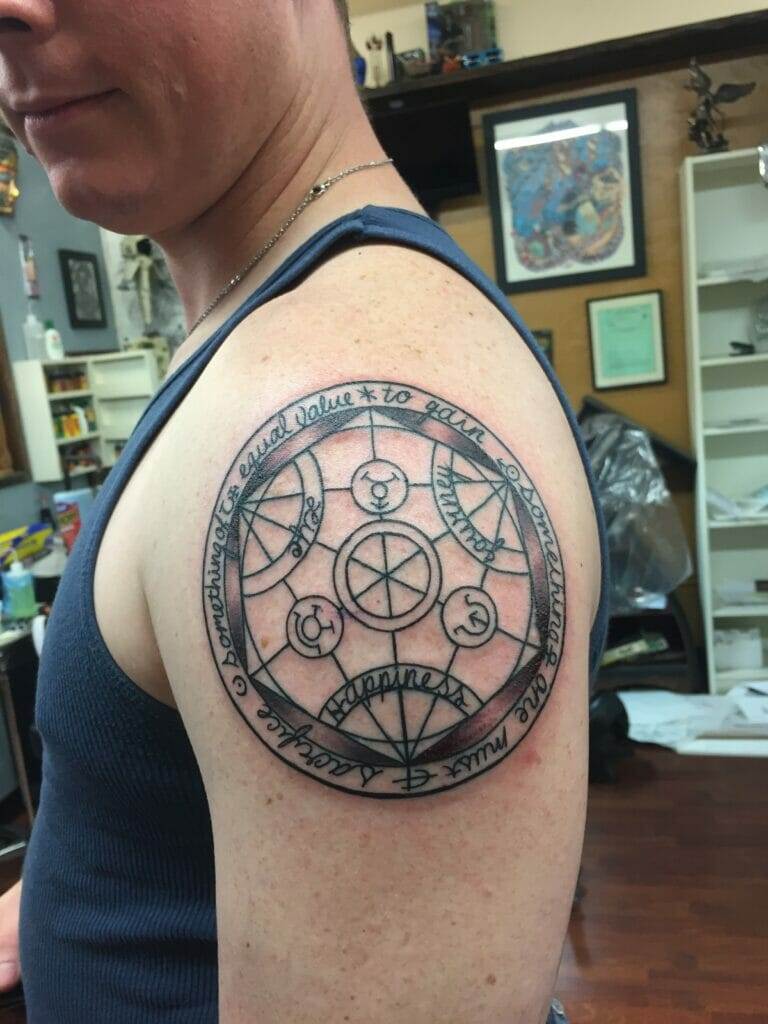
The chakra system is an ancient concept that originated in India and is closely related to the practice of yoga and meditation. Chakras are energy centers located along the spine, each corresponding to different aspects of our physical, emotional, and spiritual well-being.
Mandalas can be used as a tool to balance and align the chakras. Each chakra is associated with a specific color and geometric shape, which can be incorporated into a mandala tattoo design. By meditating on or focusing on the mandala tattoo, one can activate and balance the corresponding chakra, promoting overall health and well-being.
For example, the root chakra is associated with the color red and represents our sense of grounding and stability. By incorporating red into a mandala tattoo design placed on the lower back or base of the spine, one can help balance and activate the root chakra.
Mandala Tattoos and Meditation: Using Your Inked Art to Enhance Your Spiritual Practice
Meditation is a powerful practice that can help calm the mind, reduce stress, and promote overall well-being. Mandalas have long been used as a focal point for meditation due to their intricate patterns and symmetrical designs.
By incorporating a mandala tattoo into your meditation practice, you can enhance your ability to focus and enter a deeper state of relaxation. Simply gazing at the mandala tattoo and allowing your mind to become absorbed in its patterns can help quiet the mind and bring about a sense of peace and tranquility.
To incorporate your mandala tattoo into your meditation practice, find a quiet and comfortable space where you can sit or lie down. Gently close your eyes and take a few deep breaths to center yourself. Then, visualize your mandala tattoo in your mind’s eye or gently gaze at it if it is visible. Allow yourself to become fully present with the mandala, observing its patterns and shapes without judgment or attachment. As thoughts arise, simply acknowledge them and let them go, returning your focus to the mandala. Continue this practice for as long as feels comfortable, allowing yourself to fully immerse in the beauty and energy of the mandala.
Mandala Tattoos and Yoga: Incorporating Sacred Geometry into Your Physical Practice
Yoga is a physical and spiritual practice that combines movement, breathwork, and meditation. It is a powerful tool for self-discovery, healing, and personal growth. Mandalas can be incorporated into yoga practice to deepen the connection between body, mind, and spirit.
One way to incorporate a mandala tattoo into your yoga practice is by using it as a focal point during asana (posture) practice. Choose a position where you can easily see your tattoo, such as on the wrist or ankle. As you move through different poses, allow your gaze to rest on the mandala tattoo, using it as a point of focus to help calm the mind and bring awareness to the present moment.
Another way to incorporate mandalas into yoga practice is by creating mandala-inspired sequences. Start by choosing a specific theme or intention for your practice, such as balance or self-love. Then, design a sequence of poses that flow together in a circular or spiral pattern, mimicking the shape of a mandala. As you move through the sequence, visualize the mandala in your mind’s eye or use a physical representation, such as a mandala tapestry or artwork, as a focal point.
Mandala Tattoos and Mindfulness: Finding Inner Peace and Clarity Through Your Inked Art
Mindfulness is the practice of being fully present in the moment, without judgment or attachment. It is a powerful tool for reducing stress, increasing self-awareness, and cultivating inner peace. Mandalas can be used as a tool to enhance mindfulness practice and bring about a sense of calm and clarity.
To incorporate your mandala tattoo into your mindfulness practice, find a quiet and comfortable space where you can sit or lie down. Gently close your eyes and take a few deep breaths to center yourself. Then, visualize your mandala tattoo in your mind’s eye or gently gaze at it if it is visible. Allow yourself to become fully present with the mandala, observing its patterns and shapes without judgment or attachment. As thoughts arise, simply acknowledge them and let them go, returning your focus to the mandala. Continue this practice for as long as feels comfortable, allowing yourself to fully immerse in the beauty and energy of the mandala.
Mandala Tattoos and Healing: How Sacred Geometry Can Help You Overcome Emotional and Physical Pain
Mandalas have long been used as a tool for healing and transformation. The intricate patterns and sacred geometry found in mandalas can help individuals overcome emotional and physical pain by promoting balance and harmony within the body and mind.
By incorporating a mandala tattoo into your healing journey, you can create a visual reminder of your intention to heal and transform. The act of getting a tattoo itself can be seen as a form of catharsis, allowing you to release emotional pain and embrace a new chapter in your life.
As you gaze at or meditate on your mandala tattoo, allow yourself to connect with its energy and symbolism. Visualize the patterns and shapes within the mandala moving through your body, bringing healing and balance to any areas of pain or discomfort. Trust in the power of the mandala to guide you on your healing journey and embrace the transformation that comes with it.
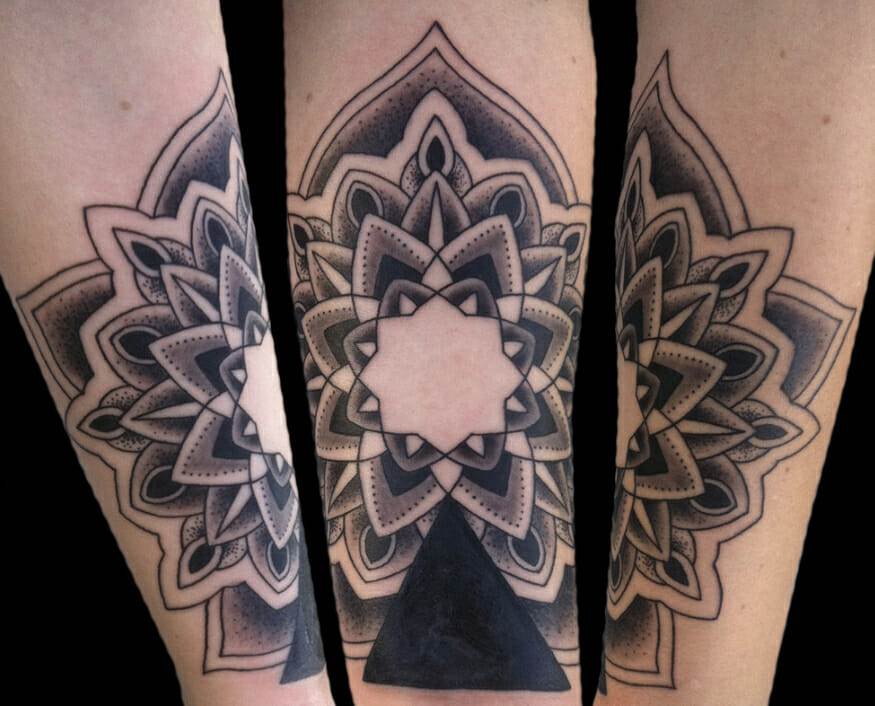
Caring for Your Mandala Tattoo: Tips for Keeping Your Sacred Geometry Ink Vibrant and Beautiful
Proper aftercare is essential for keeping your mandala tattoo looking vibrant and beautiful for years to come. Here are some tips to help you care for your ink:
1. Follow your artist’s instructions: Your tattoo artist will provide you with specific aftercare instructions, such as how long to keep the bandage on, how often to clean the tattoo, and what products to use. It is important to follow these instructions carefully to ensure proper healing.
2. Keep it clean: Gently wash your tattoo with mild soap and warm water, using your hands or a clean, soft cloth. Avoid scrubbing or using harsh products, as this can irritate the skin and affect the healing process.
3. Moisturize regularly: Apply a thin layer of fragrance-free, non-comedogenic moisturizer to your tattoo to keep the skin hydrated and prevent dryness or itching. Be sure to choose a moisturizer that is free of dyes or fragrances, as these can irritate the skin.
4. Protect from the sun: Direct sunlight can fade and damage tattoos, so it is important to protect your mandala tattoo from the sun’s harmful rays. Apply a broad-spectrum sunscreen with at least SPF 30 to your tattoo whenever it will be exposed to the sun.
5. Avoid swimming or soaking: It is best to avoid swimming or soaking in water, such as pools, hot tubs, or baths, until your tattoo is fully healed. Water can introduce bacteria into the tattoo and prolong the healing process.
By following these tips and taking proper care of your mandala tattoo, you can ensure that it remains vibrant and beautiful for years to come.
Mandala tattoos are not just beautiful pieces of art; they also hold deep spiritual significance and have the potential to promote personal growth and healing. Whether you are drawn to the intricate patterns and symbolism of mandalas or simply appreciate their aesthetic appeal, getting a mandala tattoo can be a powerful and transformative experience.
In this blog post, we explored the history of mandala tattoos, their spiritual meaning, and how they can be used as tools for meditation, yoga, mindfulness, and healing. We also discussed the different types of mandala tattoo designs, the symbolism of colors in mandalas, and tips for finding the right artist and caring for your tattoo.
Whether you choose an intricate and detailed design or a minimalist and simplified style, a mandala tattoo is sure to be a beautiful and meaningful addition to your body art. Embrace the power of sacred geometry and allow your mandala tattoo to guide you on your journey of self-discovery, healing, and transformation.

